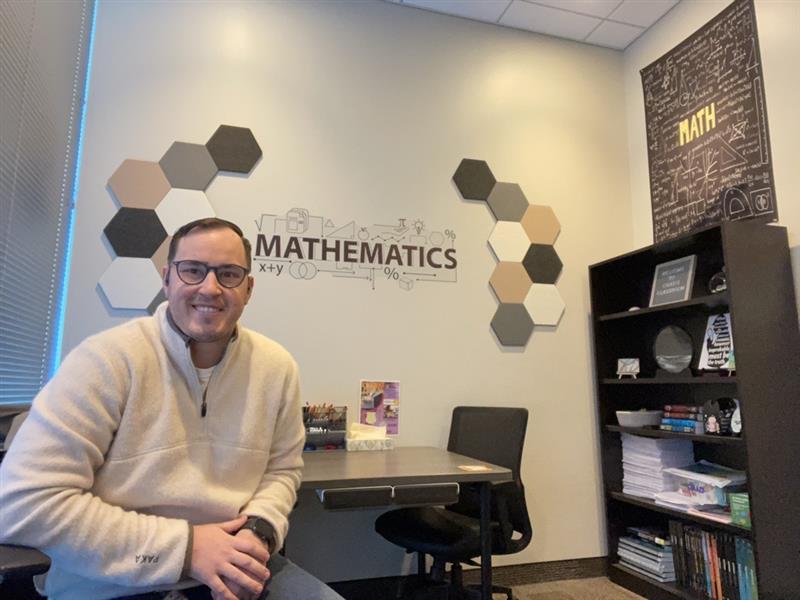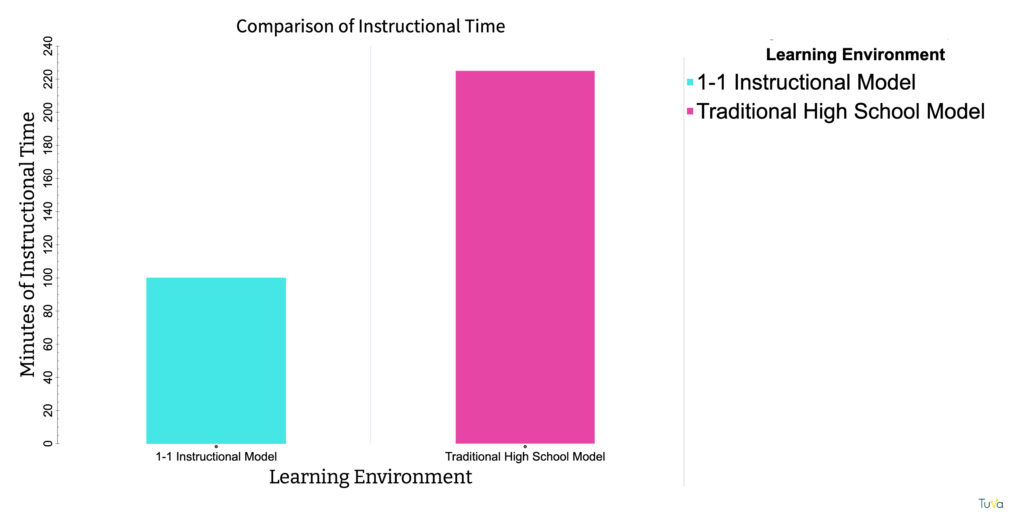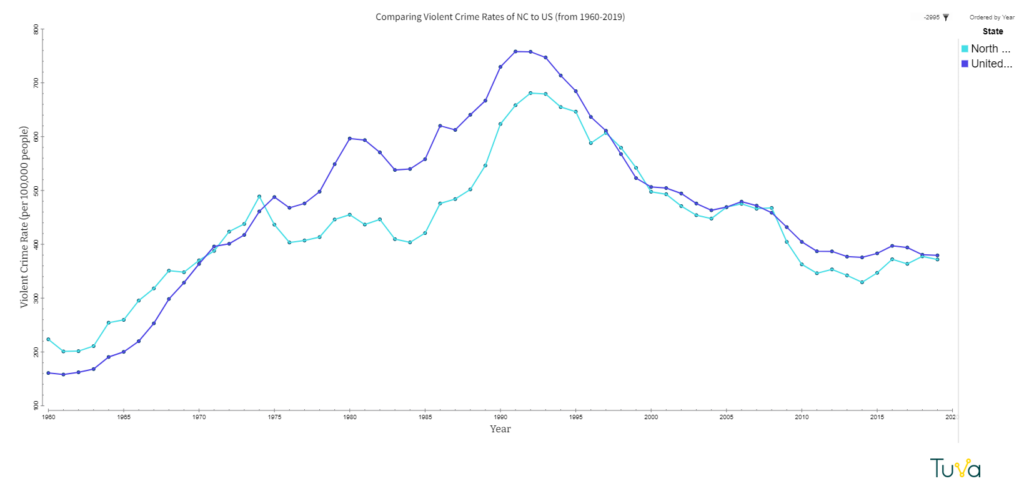

Math teacher Chad Boger prepares 30 different lesson plans per week. Increasingly, he’s using Tuva to make that formidable feat more manageable.
Boger is a teacher at Fusion Academy, a private school that offers one-on-one, personalized learning. The school serves students who thrive in a non-traditional setting. Fusion Academy promotes its program as specifically advantageous for twice-exceptional students and neurodivergent students, such as those with ADD, ADHD, or anxiety.
Boger said he enjoys working with kids at Fusion because he “gravitates” toward kids with special learning needs. He added that the one-on-one nature of his work is a boon because he gets to know each student well.
The Challenges of Condensed Class Time
That said, the one-to-one approach presents unique challenges for instructors. In a typical high school course, a student is in the classroom with their teacher for an average of 3 hours and 45 minutes per week. Fusion Academy teachers, in contrast, get just two 50-minute sessions.

Because instruction is condensed, they must be efficient with their face-to-face time. Boger is always looking for resources to help him optimize instruction time. After stumbling across Tuva this fall, Boger has used it frequently.
“Tuva is super intuitive, and it is going to save me so much time,” he said
This year, Boger’s caseload is primarily composed of juniors and seniors learning statistics. He found that teaching students to use spreadsheets was inefficient.
“It felt like a lot of wasted time when the goal was data analysis,” he explained.
This fall most of his pupils are working on descriptive statistics. Boger appreciates how easy it is to examine qualitative and quantitative data in Tuva. With the click of a few buttons, students can quickly separate the data into categories, make a box plot or histogram, and compare the spread and median of each category of data.
“Doing the same tasks with a spreadsheet,” he noted, “would have taken so much longer.”

Boger’s students use Tuva to efficiently make data displays like this one.
Never the Same Lesson Twice
Fusion Academy is not just one-to-one; it’s also personalized. Personalized learning is an approach whereby student interests and learning styles guide content and approach.
“We know that every child learns differently,” Boger said. “In a mentorship/teacher relationship, you can learn about each student’s preferences and tailor your lessons and instruction style to your learner’s needs.”
“We know that every child learns differently.”
A preliminary study by RAND Education and the Bill and Melinda Gates Foundation suggests personalized learning can help improve outcomes for a broad range of students1. But it’s a heavy lift for educators. Unlike in a traditional classroom, instructors cannot plan a lesson and reuse it for all of the other sections of that course. Each lesson must cater to the unique interests and needs of the student. But how do you do that when you are planning 30 lessons a week?
Boger personalizes his statistics course by allowing students to select a topic they’re interested in and find a related dataset. Interests have ranged widely- from music to nutrition and book genres to Supreme Court data. Regardless of their chosen data, Boger has students upload it into Tuva for easy exploration.

Last semester, Boger uploaded the dataset that was used to make this visualization about crime rates. Users can upload up to five datasets to Tuva for free. Try it!
Passionate About Data Literacy
Teaching statistics is Boger’s job, but that’s not all it is. It’s also his mission. Boger believes that by getting kids invested in learning statistics, he is preparing them with the data literacy skills they need to thrive in the information age.
“If I can at least expose them to these things and help them think more critically—is it coming from a reliable source? Is it someone trying to push their agenda? That’s what I am trying to get across—not just can you calculate a formula.”
- Pane, John F., Elizabeth D. Steiner, Matthew D. Baird, Laura S. Hamilton, and Joseph D. Pane, How Does Personalized Learning Affect Student Achievement? Santa Monica, CA: RAND Corporation, 2017. https://www.rand.org/pubs/research_briefs/RB9994.html. ↩︎